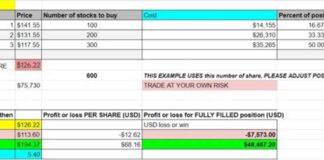In August 2024, the United States experienced a significant decrease in inflation rates, with prices dropping to their lowest levels since February 2021. This trend of declining inflation, known as disinflation, indicates that while prices are still rising, they are doing so at a slower pace overall. However, there are also areas where deflation is occurring, with prices actually decreasing. This deflation has primarily been observed in physical goods like cars and household appliances, as well as in categories such as gasoline and certain groceries, according to the consumer price index.
The Impact of Disinflation on the U.S. Economy
Disinflation, the gradual decrease in the rate of inflation, has been a key feature of the U.S. economy in recent months. While prices are still increasing, the pace of this increase has slowed down considerably compared to previous periods. This trend can be attributed to a variety of factors, including changes in consumer spending patterns, shifts in global supply chains, and the overall economic impact of the pandemic.
One of the main drivers of disinflation has been a normalization of supply and demand trends that were disrupted during the height of the pandemic. As consumers shifted their spending habits towards physical goods and away from services like travel and dining out, demand for certain products surged. At the same time, supply chains were disrupted, leading to shortages and price increases. However, as these dynamics have started to stabilize, prices have begun to fall in certain sectors.
In particular, prices for core goods, which exclude food and energy, have decreased by an average of 2% since August 2023, according to CPI data. This decline is reflective of the broader trend of disinflation in the economy. While core goods prices fell by 0.2% from July to August 2024, the overall impact of disinflation has been felt across a wide range of products and industries.
The Role of Supply and Demand Dynamics
The interplay between supply and demand has played a crucial role in driving the deflation of prices for certain goods and services. During the pandemic, demand for physical goods skyrocketed as consumers spent more time at home and had extra discretionary income due to reduced spending on other activities. This surge in demand led to shortages and price increases as companies struggled to keep up with consumer preferences.
However, as the economy has started to recover and supply chains have adapted to the new reality, prices for goods like furniture, appliances, and apparel have begun to decline. For example, prices for furniture and bedding have dropped by about 5% since August 2023, while prices for appliances have decreased by 3%. Similarly, prices for tools, hardware, outdoor equipment, toys, and apparel have all experienced deflation to varying degrees.
The impact of supply and demand dynamics can also be seen in the automotive industry, where prices for new and used vehicles have fallen by 1% and 10% respectively since August 2023. Car and truck rental prices have also deflated by about 8%, reflecting the changing consumer preferences and market conditions in the wake of the pandemic. These price declines are a direct result of improved inventory levels and reduced demand, as well as higher financing costs for consumers.
Global Factors Influencing Deflation
In addition to supply and demand dynamics, global factors have also contributed to the deflation of prices in the U.S. economy. The strength of the U.S. dollar relative to other currencies has made it cheaper for American companies to import goods from overseas, reducing the cost of production and ultimately leading to lower prices for consumers. This trend has been further fueled by long-term forces like globalization, which have increased the availability of lower-priced goods from countries like China.
Another factor influencing deflation is the decline in jet fuel prices, which has contributed to a 1% decrease in airline fares over the past year. Lower fuel costs have helped airlines reduce their operating expenses, allowing them to pass on the savings to consumers in the form of lower ticket prices. Similarly, grocery prices have fallen for items like apples, potatoes, ham, coffee, rice, seafood, and bananas, reflecting changes in supply and demand dynamics for these products.
Quality Improvements and Inflation Data
It’s important to note that some categories may show deflationary trends only on paper, due to quality improvements over time. For example, electronics like televisions, cellphones, and computers continually improve in terms of performance and features, which can lead to lower prices in the consumer price index. While these price declines may not reflect actual decreases in consumer spending, they do highlight the impact of technological advancements on pricing trends.
Overall, the deflation of prices in certain sectors of the economy is a complex phenomenon driven by a combination of factors, including supply and demand dynamics, global economic trends, and quality improvements in consumer goods. While disinflation may be a temporary trend in response to the pandemic, it’s important to monitor these developments closely to understand their long-term implications for the U.S. economy.

















